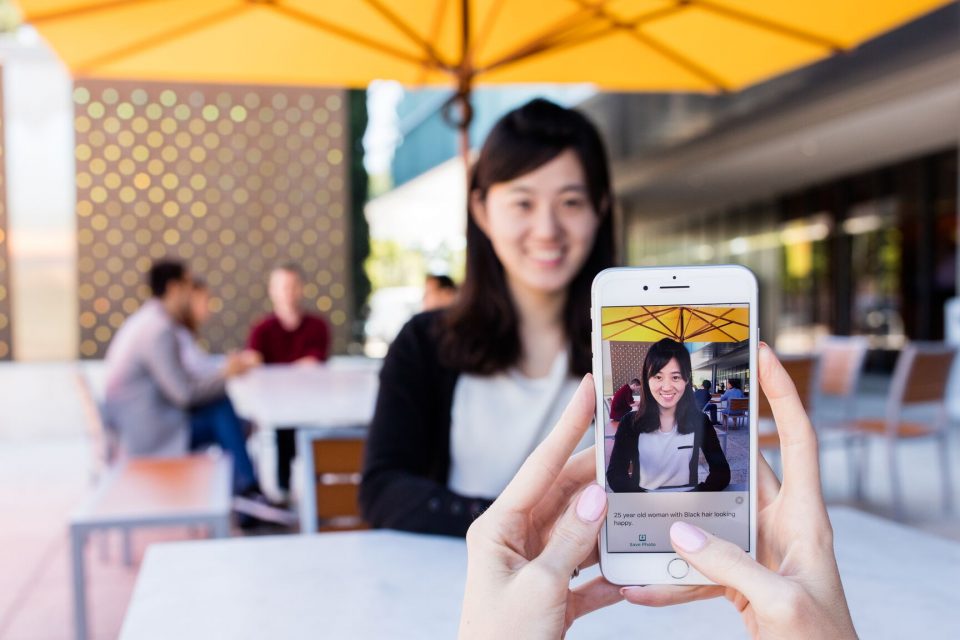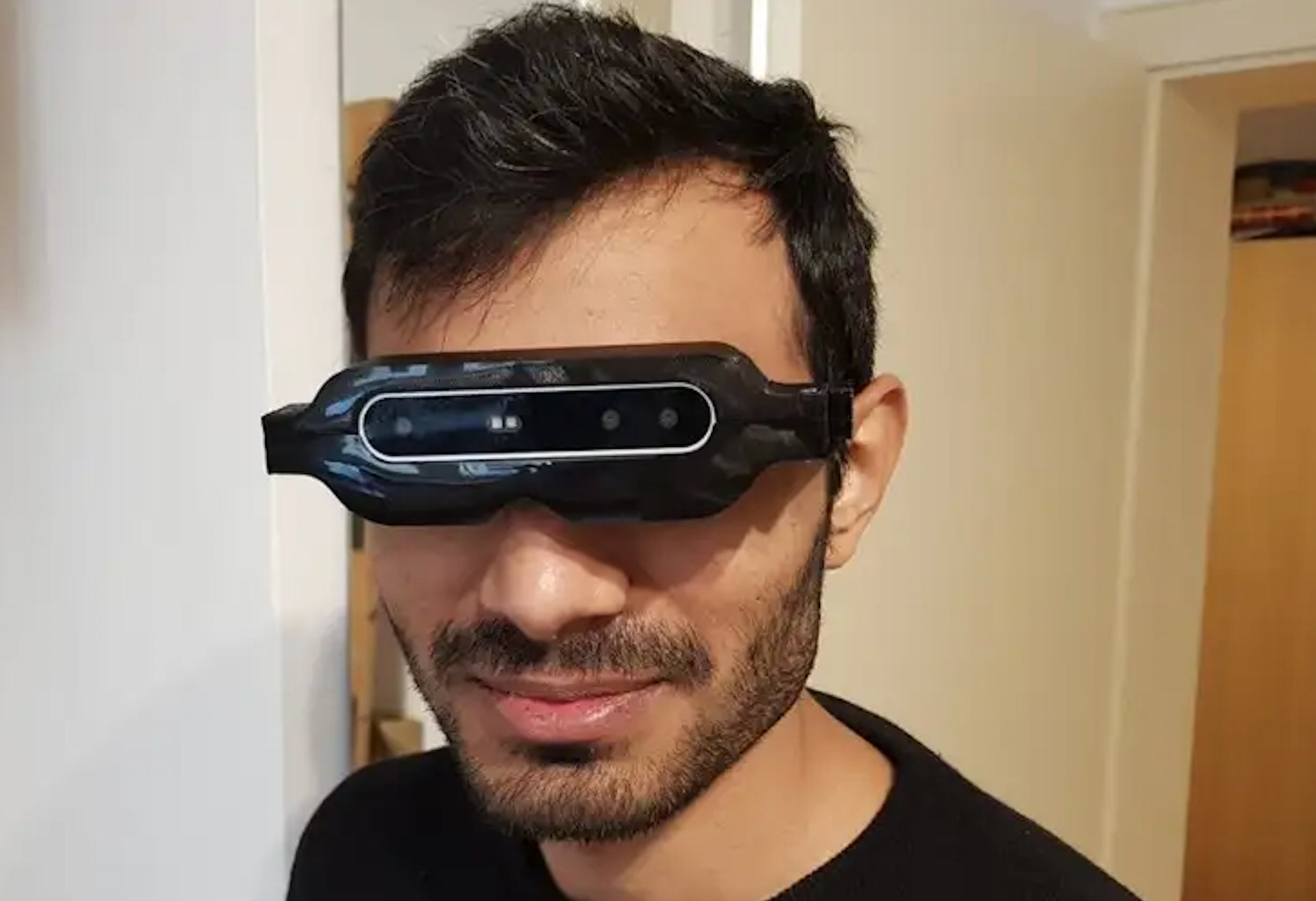Empowering Freedom With Assistive Modern Technology for the Blind
The assimilation of assistive innovation right into the lives of people with aesthetic problems stands for a substantial innovation in advertising independence and self-sufficiency. From innovative screen viewers to sophisticated wise walking canes, these tools not just boost day-to-day navigation and interaction yet also encourage users to engage meaningfully in different elements of life. As we check out the myriad advantages and real-world applications of these modern technologies, it ends up being vital to take a look at the underlying factors that add to their efficiency and the capacity for future developments in this vital area.
Introduction of Assistive Technology
%20(1).webp)
The advancement of assistive technology is based in principles of inclusivity and empowerment. Developments in software, equipment, and sensory enhancements give individuals with options customized to their particular demands. From display readers that transform text to speech, to responsive gadgets that convey info through touch, these devices transform the means individuals engage with their environments.
In addition to practical applications, assistive innovation fosters better social addition and involvement in various fields, including education and learning and work (AI-powered visual aids). As research and advancement continue to evolve, the capacity for assistive modern technology to even more improve the lives of aesthetically impaired individuals stays appealing, leading the means for a much more fair culture where every person can flourish
Sorts Of Assistive Devices
A range of assistive gadgets have actually arised to sustain people with visual problems, each created to fulfill details needs and enhance everyday performance. These gadgets vary from low-tech solutions to state-of-the-art innovations, offering diverse choices for customers.
Low-tech devices include magnifiers and large-print products that assist in analysis and writing. Braille devices, such as Braille slates and styluses, enable tactile analysis and communication. Positioning and mobility help, like white walking canes, aid customers browse their setting securely.
On the higher end of the spectrum, digital magnification systems and display viewers supply significant assistance. Digital magnifiers enable individuals to expand message and photos on displays, while display readers convert digital content right into synthesized speech, facilitating access to information on computers and smart devices.
Smartphone applications additionally play an important role, providing attributes like message recognition and navigation aid. Wearable modern technology, such as wise glasses equipped with augmented truth, is arising as a promising device to improve situational recognition.
Advantages of Assistive Technology
The assimilation of assistive innovation substantially enhances the lifestyle for individuals with aesthetic disabilities. These technologies encourage individuals by promoting freedom, enabling them to browse their environments better find more information and do daily jobs with higher ease. For instance, display visitors and zoom software program permit people to gain access to digital info, promoting expert and academic chances that may have previously been out of reach.
Moreover, assistive tools such as smart walking sticks and GPS applications supply real-time navigation help, boosting wheelchair and safety. This raised autonomy not just enhances self-confidence but additionally motivates social involvement, enabling individuals to take part even more totally in their communities.
Assistive modern technology additionally promotes communication, helping users get in touch with others via voice acknowledgment and text-to-speech applications. This capacity is vital for maintaining relationships and accessing essential information.
Additionally, the customization options readily available with many assistive technologies guarantee that users can customize tools to their details demands, additionally boosting functionality and efficiency. In general, the benefits of assistive technology for people with aesthetic disabilities are profound, promoting a more comprehensive culture where everybody can pursue their goals and goals.
Case Researches and Success Stories
Highlighting the transformative impact of assistive innovation, numerous situation researches show how people with visual disabilities have actually effectively incorporated these tools into their day-to-days live. One compelling instance includes an university student that used display analysis software to navigate on-line resources and scholastic materials efficiently. This technology not only facilitated her education but likewise boosted her self-confidence in joining conversations and team projects.
One more study includes an expert that uses a smartphone application developed for navigation and things recognition. By frameless glasses utilizing this app, he has reclaimed autonomy in both his personal and work atmospheres, enabling him site here to commute individually and involve with colleagues better.
Additionally, a senior citizen shared her experience with braille e-readers, which enabled her to access a vast array of literature and remain gotten in touch with her neighborhood with publication clubs.
These success tales highlight the critical duty of assistive modern technology in cultivating independence, enhancing quality of life, and promoting social assimilation for people with visual disabilities (OCR devices for the blind). By welcoming these ingenious tools, customers can get over difficulties and seize possibilities that contribute to their specialist and personal fulfillment

Future Trends in Assistive Technology
Advancement in assistive modern technology is positioned to redefine the landscape of assistance for individuals with aesthetic impairments. Emerging trends emphasize the integration of expert system (AI) and machine learning, which enhance the functionality of gadgets that help with navigating and info availability. As an example, AI-driven applications are now with the ability of analyzing visual data in real-time, enabling users to engage with their environment extra individually.
Furthermore, the growth of wearable innovation is progressing rapidly. Smart glasses furnished with enhanced truth (AR) can provide audio descriptions of environments, transforming exactly how individuals interact with public areas. These devices not only promote freedom but additionally foster social inclusion.
Furthermore, the Internet of Things (IoT) is making homes smarter, enabling smooth connectivity in between assistive devices and everyday home appliances. This connection encourages users by enabling automated feedbacks and voice-activated controls tailored to private requirements.
Conclusion
To conclude, assistive innovation plays a crucial role in empowering people with aesthetic impairments by enhancing their independence and interaction with their environments. The diverse variety of applications and gadgets offered not just facilitates navigation and communication however likewise promotes social assimilation and opportunities for personal and professional growth. As innovations proceed in this area, the possibility for enhancing the lifestyle for those with visual disabilities will expand, fostering greater freedom and empowerment.
